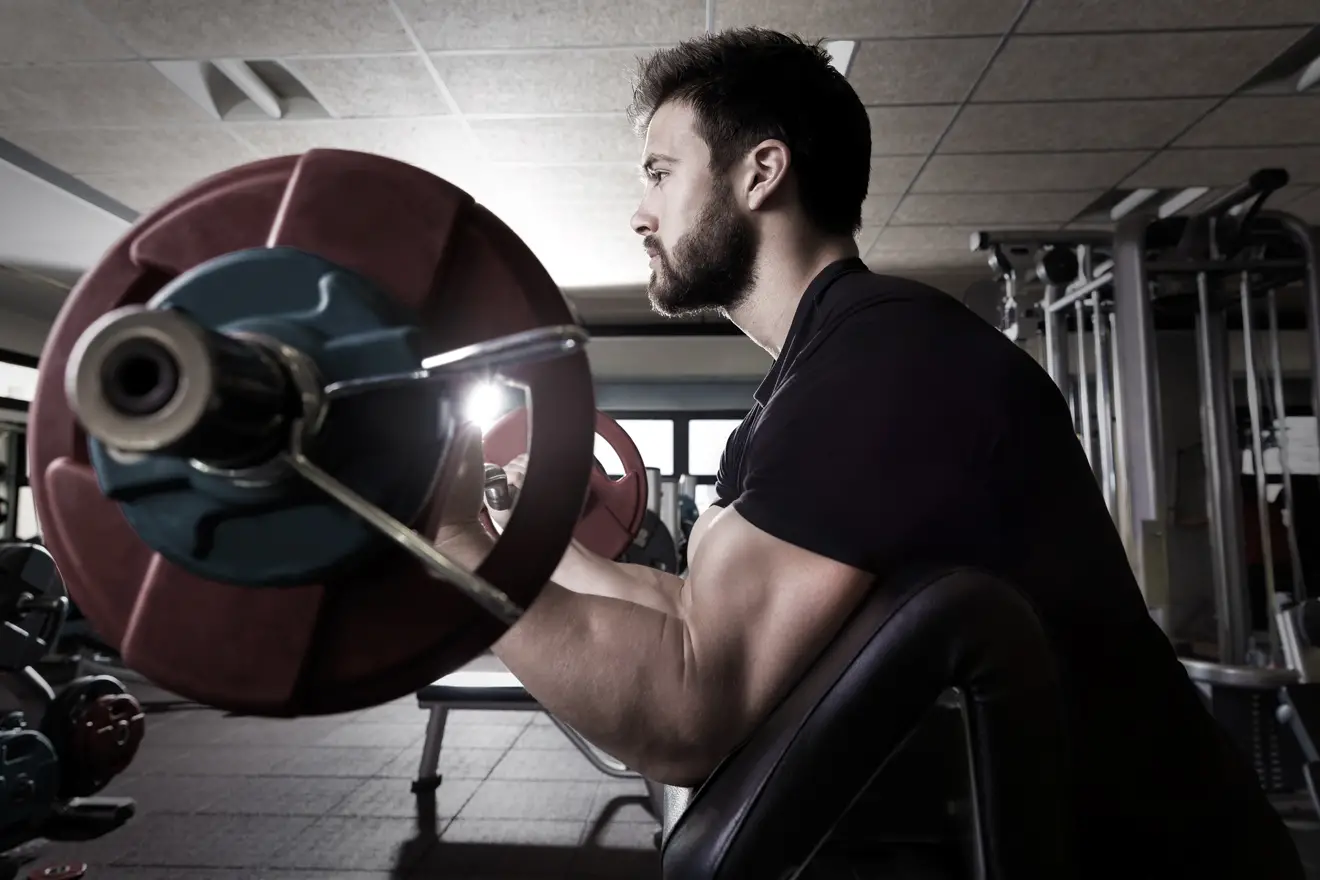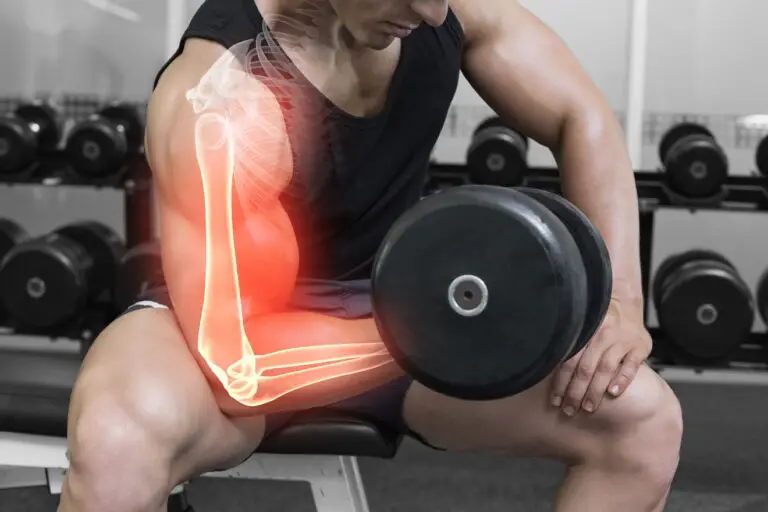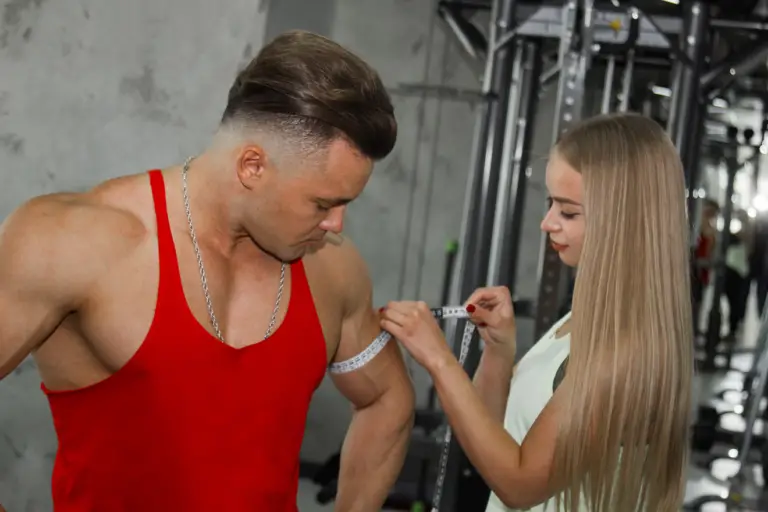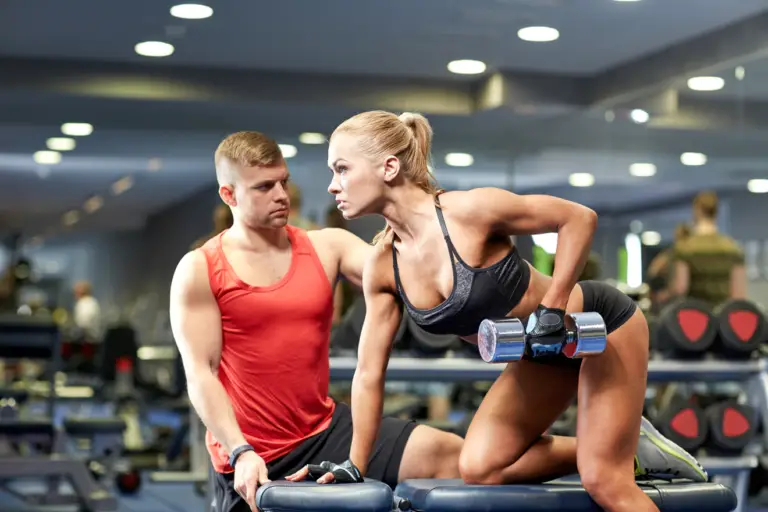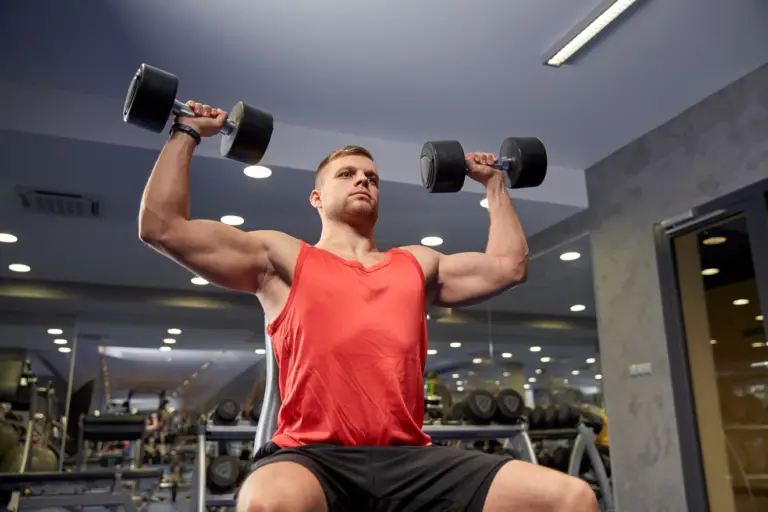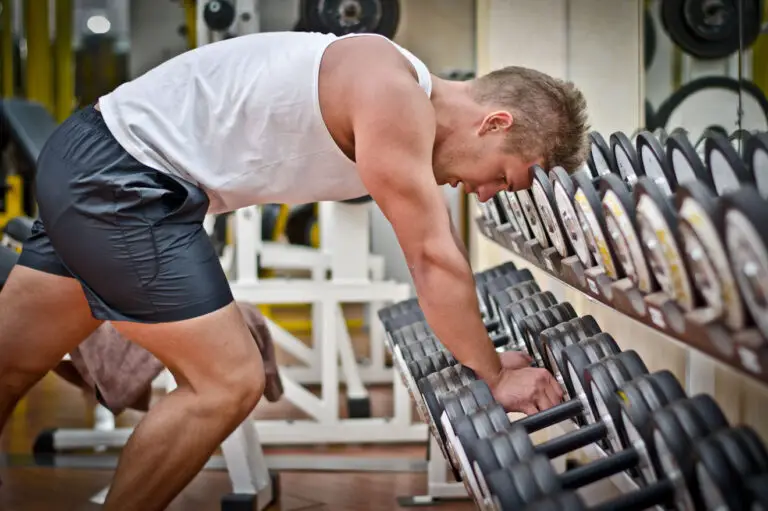Types of weight training exercise
Exercise categories
There are literally thousands of weight training exercises and exercise variations. All of the exercises can be categorized into two groups: isolation and compound. The same exercises can also be divided into pull and push categories, or primary, assistance, and auxiliary categories. All of these categories are explained below. I also define aerobic and anaerobic exercises.
Isolation and compound exercises
Probably the most common exercise classification scheme is to divide them into isolation and compound categories.
Isolation exercises are those that involve the movement of only one joint (or one pair of joints). These exercises are great for focusing on the development of individual muscle groups. However, the movements involved are usually not very natural and therefore not very useful outside of the gym. Popular isolation exercises include the dumbbell curl, leg extension, and machine seated calf raise.
Compound exercises involve the movement of two or more joints (or pairs of joints). These exercises are ‘bigger’ and more difficult than isolation exercises, not only for your muscles but also for your central nervous system. They stimulate more hormone-producing tissues and maximize the release of muscle-building hormones, such as testosterone. This leads to an increase in body-wide protein synthesis and muscular development. What’s more, the movements involved with compound exercises are much more natural and therefore help you to develop functional fitness. Popular compound exercises include the barbell bench press, barbell deadlift, and barbell squat.
Unless you intend to pre-exhaust a muscle, you should always perform compound exercises before isolation exercises. The reasons are that:
- Compound exercises offer the most benefits and require the most energy, so it makes sense to give them priority
- The isolation exercises tire individual muscles, and if these muscles are involved in the compound exercises, the compound exercises will be compromised
Another rule related to compound and isolation exercises is that, while you can lift very heavy weights with compound exercises once you have the experience, you shouldn’t regularly try to lift very heavy weights with isolation exercises. The reason is that it’s unwise to put too much pressure on a single joint. With compound exercises, the weight is distributed among a number of joints, making it less risky for individual joints.
Pull and push
Another common exercise classification scheme is to divide them into pull and push categories. Pull exercises are those in which the target muscle contracts when the weight is pulled towards the body and lengthens when the weight is extended away from the body. Examples of pull exercises include the crunch, EZ bar curl, and lat pull-down. Push exercises are those in which the target muscle contracts when the weight is pushed away from the body and lengthens when the weight is returned towards the body. Examples of push exercises include the barbell overhead press, dumbbell bench press, and leg extension.
Primary, assistance, and auxiliary exercises
Another way in which to classify exercises is to divide them into:
- Primary
- Assistance
- Auxiliary
These categories were originally used by competitors of powerlifting and weightlifting but have since been adopted by many bodybuilders. Powerlifting and weightlifting are the two most popular strength sports. In both sports, the competitive goal is to make the heaviest lift. Powerlifters compete for the heaviest squat, deadlift, and bench press, whereas weightlifters compete for the heaviest snatch, and clean and jerk.
The moves for which these lifters train — the squat, deadlift, clean and jerk, etc. — are known as primary moves. The lifters train for these moves by not only practicing the moves themselves but also using assistance and auxiliary exercises. Assistance and auxiliary exercises help the lifters to improve their primary moves — hence ‘assistance’ and ‘auxiliary’.
Assistance exercises are usually similar to the primary move but less intense, often dropping the barbell and replacing it either with dumbbells or body weight. For example, the dumbbell bench press and push-up are assistance exercises for the barbell bench press. Auxiliary exercises, on the other hand, are not similar to the primary move. They are usually isolation exercises that help to strengthen lagging body parts that are important for the primary move. For example, any exercise used to strengthen the shoulders to improve the clean and jerk can be considered an auxiliary exercise.
Many bodybuilders now use these terms to describe the exercises that they perform. They classify the most important exercises in their program (usually the compound exercises, such as the barbell squat, barbell bench press, barbell deadlift, and barbell overhead press) as primary exercises, and they classify any exercises that help to improve these exercises as either assistance or auxiliary depending on how they assist. This, then, means that whether an exercise is primary, assistance, or auxiliary is relative to the bodybuilder’s training program. Note, however, that primary and assistance exercises are almost always compound exercises, whereas auxiliary exercises are almost always isolation exercises.
When training, primary, assistance, and auxiliary exercises have to be completed in the right order. Since the primary exercises are the most important and require the most energy, they should be performed first. The assistance exercises should come next, followed by the auxiliary exercises, the latter of which will put the finishing touches to the workout.
I should also point out that some bodybuilders do not distinguish between assistance and auxiliary exercises, simply labeling them both as either assistance or auxiliary.
Aerobic and anaerobic exercises
You may also have heard of aerobic and anaerobic exercises, which I briefly explain below. For a far more detailed explanation of aerobic and anaerobic training, see Introduction to cardio, in the Cardio Training Guide.
Your body is made of cells. The cells need energy to work. They get the energy by breaking down nutrients. In order to break the nutrients down, they can either use oxygen or other chemicals. The process of using oxygen is slow but very efficient, releasing a lot of energy. The process of using the other chemicals is fast but very inefficient, producing far less energy.
When you perform low-intensity exercises, such as jogging, your cells are able to rely on the slow but efficient method of breaking nutrients down using oxygen. These exercises are known as aerobic, which means ‘with oxygen’. However, when you perform high-intensity exercises, such as sprinting, your cells must rely on the fast but inefficient method of breaking nutrients down using the other chemicals. These exercises are known as anaerobic, which means ‘without oxygen’.
During anaerobic exercises, muscle cells produce waste materials that lead to discomfort and weakening of the muscles. This deterioration in performance is known as fatigue. Fatigue forces you to lower the intensity of the activity and eventually stop, which allows the muscles to remove the waste materials. Aerobic exercises do not produce the same waste materials, which is why the muscle cells can contract repeatedly for long periods of time without fatigue.
Basically, whether an exercise is aerobic or anaerobic depends on the intensity at which you perform it. The more intensely you engage the exercise, the more anaerobic it will become. Unless you use extremely light weights, all weight training exercises are anaerobic because the muscle cells need a rapid source of energy to sustain their work.

